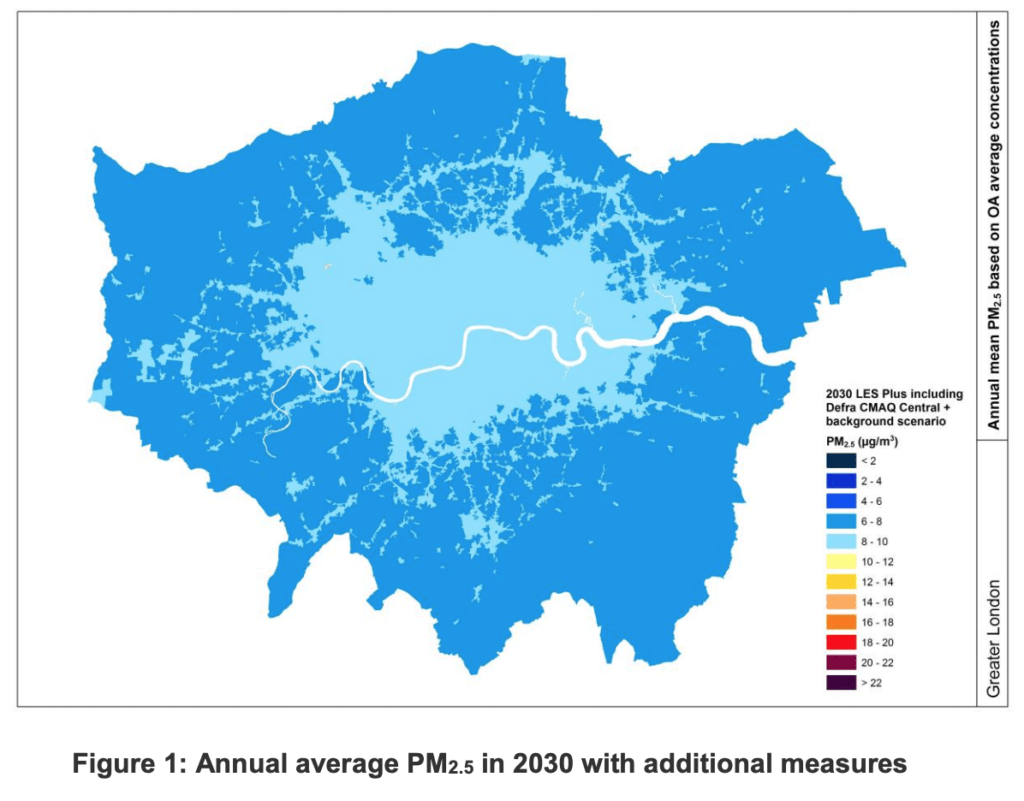It’s a stark and worrying figure. Around 99% of London exceeds WHO air pollution limits. In 2019 around 4,000 deaths in the capital were attributed to air pollution. The study, which was commissioned by City Hall discovered that it was the outer boroughs of London, which saw the highest deaths attributed to air pollution. This was mainly due to a higher concentration of older people living in these areas. Older people, as we have seen with the covid pandemic tend to be much more susceptible to succumbing to respiratory disease.
Air pollution is simply not a problem associated with Central London. Londoners from BAME (Black, Asian and Ethnic Minority) backgrounds are found to be exposed to the highest levels of air pollution across many areas of the capital.

The pollution from PM2.5, which are pollution particles, small enough to enter organs in the human body is what the WHO is specifically measuring when they refer to the shocking 99% figure previously mentioned.
Where does PM2.5 originate from?
Road transport is the largest individual source of PM2.5 in London, accounting for 30 per cent of local emissions. The introduction of the central London Ultra Low Emission Zone and cleaning up the bus and taxi fleets are expected to reduce PM2.5 emissions coming from road transport. However, a growing proportion of road transport emissions are now non-exhaust emissions including road wear, resuspension of particles and tyre and brake wear. Therefore, is it also essential to reduce the number of trips made by road and encourage walking, cycling and public transport where possible.
Biomass burning (including domestic wood burning on open fires) is the second-largest source of PM2.5 in London, accounting for 16 per cent of local PM2.5 emissions. It’s important to note here this does not include burning properly seasoned wood on high-efficiency Ecodesign Ready wood-burning stoves, which are significantly cleaner than open fires. Construction, which includes emissions from Non-Road Mobile Machinery, is the next largest source making up 15 per cent of local emissions. The next largest individual source is cooking (including commercial cooking) which contributes 13 per cent of local emissions.
You can read more about our articles on pollution in London here: